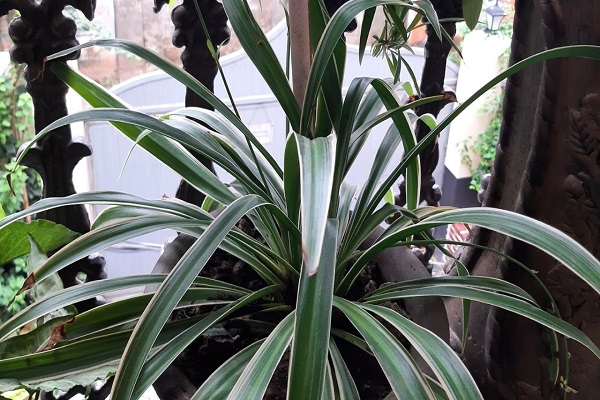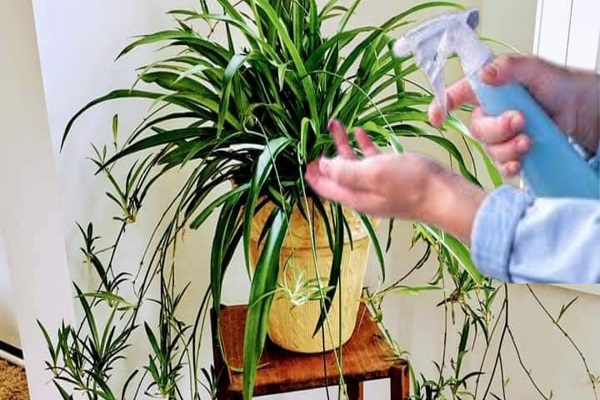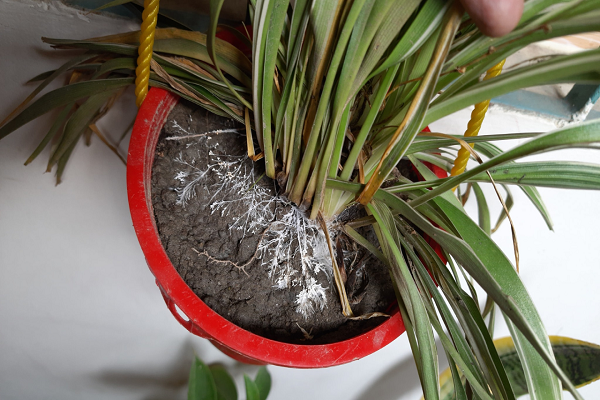If you’re like me, you may have bought a spider plant or two with the intent of brightening up your home décor and adding a splash of green to the room.
Why is not my spider plant growing But if you’re also like me, you may be struggling to get that spider plant to grow. Don’t worry – you’re not alone! Many people have this problem, but luckily it’s an easy one to solve.
In this blog post, I’m going to tell you why your spider plant isn’t growing and how you can make it flourish. So read on for some tips and tricks!
Quick Navigation
The Most Common Reasons Why Is Not My Spider Plant Growing
If you’re a fan of spider plants, you know that they’re pretty easy to care for. However, even the most diligent gardener can run into problems from time to time. If your spider plant isn’t growing, the most common reasons are here:
Light Conditions

When taking care of spider plants, too much sunlight is one of the most common problems. Spider plants need a certain amount of sunlight to grow well. It could slow down the plant’s growth if they don’t get enough light.
Spider plants can grow outside in conditions like full shade or only some shade. Growing spider plants inside is a different story; they will need a lot more light.
Spider plants need bright but not direct sunlight to grow and stay healthy. Find a good place in your home to help things grow and see if that helps.
If you’ve been keeping the plant in the dark part of the house, it’s not getting enough light to grow. You might not give the plant enough sun every day, which is easy to fix as long as the spider plant is still alive.
Watering Issues

Your spider plant’s slow growth could also be caused by how you water it. If you don’t water the plant enough, it could die, but if you water it too much, it could also die.
Root rot can happen when you water a plant more than it needs. This will make a plant’s roots soft, and different parts of the plant will start to die.
If you find root rot early, you have a better chance of saving the plant, but it doesn’t always work out that way. When you water spider plants, you should keep the soil moist, but not soaked.
You should give your spider plants water about once a week. Check the soil of the plants to see if it’s dry before you water them. If it’s still wet, wait a day and do this again until the soil is dry. The plant may be thirsty, but it likes it when the soil dries out every so often.
Soil Issues

Soil problems can also affect growth by making it harder for the plant to stay alive. If you use too heavy soil, it might be hard for the spider plant to drain.
You should use soil that drains well in the pot for your spider plant so that it can dry out between waterings. This means you should test the soil to see how well it drains before doing anything else.
Sometimes adding sand or perlite to the soil can help it drain faster. Just mix the soil as best you can to help the spider plant grow.
Temperature And Humidity

For the best growth, the air should be between 70°F and 90°F. If you look and see that the spider plants haven’t grown, it may be because a cool breeze is blowing on them during the colder months.
Keep the spider plant out of the cool draft because it can’t survive the winter. It would help if you didn’t try to use the window on the south side.
Any spider plant should have between 50 and 60% humidity. Spider plants might not grow as fast as they should because of humidity, too.
You must put a humidifier near the spider plant even when it’s very hot outside. You don’t have to worry about pests when it’s humid because you can always spray neem oil to keep most of them away.
Keep spider plants away from radiators in the winter, and places with extra moisture, like the bathroom, can help.
Potential Insect Problems

If your beloved spider plant is not growing as vigorously as it used to, there may be several potential problems. One common issue is insect infestation. While spider plants are relatively resistant to pests, they can fall victim to mealybugs, aphids, and thrips. These tiny creatures can suck the vital juices out of your plant, causing it to wilt and eventually die.
If you suspect insects are the problem, closely inspect your plant for any signs.
If you find any pests on your spider plant, you’ll need to take action quickly to save your plant.
The Size Of The Containers

The plant’s container size affects its growth. Large containers pose a greater risk of overwatering. Roots will cover the whole surface of a too-small container, stunting plant growth.
This can impede or stop plant growth. Spider plants may tolerate root encirclement and grow in smaller pots. Repotting spider plants shouldn’t be considered until the roots are visible.
The plant’s roots require room to grow to thrive. Once a plant’s root system is established, you must transfer it to a larger container.
The Season Or Time Of Year
You must realize that the spider plant matures a little later in the year than other plants.
There are spiderlings on this lovely plant that you may raise in a pot. Spider plants have a quick growth rate, but you always get to choose which ones to keep.
The spider plants’ babies should begin to grow around late February or early March. You will see small spider plants in addition to the mother plant.
These little spider plants will start to grow in the spring. “Pups” are what these are.
Up to the beginning of the rainy season, you will still need to take care of the spider plant for at least another two months.
The spider plants will begin to blossom and grow as it rains. It’s possible that the plant won’t grow because it’s too hot.
Frequently Asked Questions
Do Spider Plants Clean The Air?
Spider plants are native to subtropical and tropical regions and typically grow in areas with high humidity. These plants consume large quantities of air pollutants, such as carbon dioxide and nitrogen dioxide, through their leaves and flowers.
A NASA study found that spider plants could get 95% of chemicals out of the air in 24 hours. Carbon monoxide is one of the toxins that spider plants filter out.
Why Is My Spider Plant Fading In Color?
When you first get a spider plant, it is vibrant and full of life. Over time, the leaves will start to fade in color, and the plant may stop growing altogether. There are several reasons why your spider plant may be fading in color.
- First, over-watering can cause the leaves to turn yellow and curl.
- Second, too much fertilizer can cause the leaves to become bloated and discolored.
- Finally, too much sunlight or heat can damage the plants’ cells and cause them to fade.
If you see that the color of your spider plant is fading, there are a few easy things you can do to help it get better.
- First, make sure that your water is sparingly and only when needed.
- Secondly, try using less fertilizer than usual and avoid direct sunlight or heat exposure when possible.
- And lastly, be sure to move your spider plant into a shadier location if it becomes too sunny or hot for its liking.
Are Spider Plants Poisonous To Cats And Dogs?
Spider plants are not poisonous to cats and dogs but have small hairs that can irritate if ingested. If your pet is bothered by spider plants, you can try brushing them off or taking them outside.
Where Is The Best Place To Put A Spider Plant?
There are many places where you can put a spider plant, depending on the plant’s specific needs. A spider plant will grow best in bright light and moderate humidity areas.
So, if you have a windowsill that gets plenty of sunlight, or an area near a sink or water fountain where it’s moist, that’s likely where your spider plant will thrive. If you’re unsure where to put your spider plant, try looking for one growing well in an area near you and mimic its natural environment.
Do Spider Plants Release Oxygen At Night?
Spider plants release oxygen at night because they need more than during the day. During the day, the plant uses sunlight to convert carbon dioxide into glucose, which the plant uses for energy. At night, when there is no sunlight, the plant switches to an anaerobic process where it breaks down organic matter to release oxygen.
Final Word
The spider plant is one of the easiest to take care of because it is strong. Use a balanced fertilizer to feed the soil lightly. Don’t over-fertilize. Every two weeks during the growing season is a good time to fertilize. Winter could be hard. When spring comes again, these plants will get better.

I’m Md. Mahfuz Anam always enjoys taking care of plants and gardening. I find it therapeutic and a great way to relax. I have also always been interested in learning about different types of plants and how to care for them.


